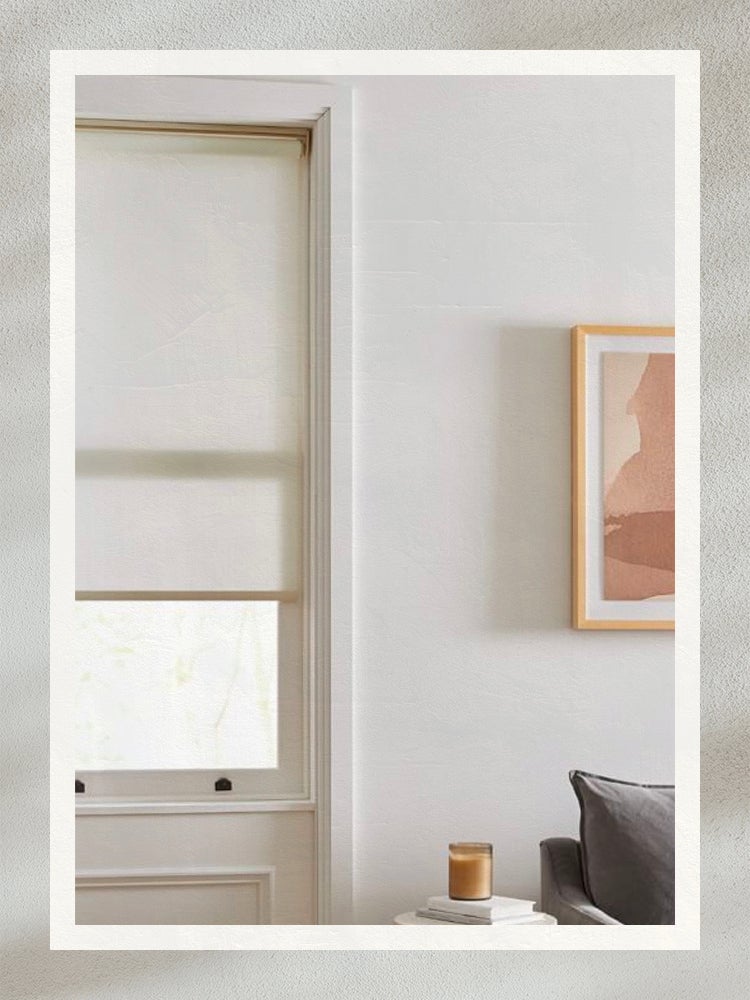There Are No Knotted Strings to Battle Against With the Best Blinds and Shades
Get an instant rental upgrade with these six picks.
Updated Jun 24, 2022 6:23 AM
We may earn revenue from the products available on this page and participate in affiliate programs.
If windows are a room’s eyes, then window treatments like blinds, curtains, and shades are basically the eyebrows and lashes, providing framing while also conveying character and style. Blinds and shades in particular have an especially important role to play, filtering out light to create pitch-black bedrooms or selectively allowing it in to create delicately lit living spaces.
Not sure what material, functionality, or operational style is right for you, or how to clean or resize the window treatments you already have? We have the answers, and we’ve also brought together a range of options for the best blinds and shades for any room in your house, no matter what you’re looking for—from bamboo and linen to cordless and sliding.
- Best woven: Letau Bamboo Light-Filtering Roman Shades
- Best wood: The Shade Store Wood Blinds
- Best value: IKEA Hoppvals Cellular Blinds
- Best linen: Pottery Barn Belgian Linen Cordless Shades
- Best blackout: Barn and Willow Dune Blackout Roller Shades
- Best roller: West Elm Woven Cordless Roller Shades
A Few Things to Keep in Mind
Design: For window blinds, the type of shade goes hand in hand with design. Roller and solar shades, for example, tend to be minimalistic, economical, sleek, and super-functional, says Adam Skalman, vice president of sales development and training at the Shade Store. Wood shades are another typical blinds option, consisting of horizontal slats that are tilted to control light or gathered at the top of a window for an unobstructed view. Finally, roman shades are said to date to Rome’s famed Colosseum and, not surprisingly, often lean more traditional and tailored—although that’s not to say that a funky fabric can’t enliven this centuries-old classic.
Installation and operation: Installing and operating blinds can run from high-tech (think: running electrical power and installing motors or batteries) for automated blinds, to sweet and simple, like corded or continuous-loop chain blinds. Something in between the two are spring-loaded cordless systems, where a gentle tug moves the shade up and down—and there are no visible controls, to boot.
Light and privacy: “Opaque shades with a blackout liner are the best at keeping out light and increasing privacy,” says Jason Walker, a design consultant at Stoneside Blinds & Shades. Generally roller shades and cellular shades are the most successful at blocking out light, but roman blinds and wood blinds can also work well for light control and privacy—although because of their materiality (fabric) or composition (aka the spaces between the slats of wood), they are better for filtering light rather than blocking it out. In reality, you probably don’t need complete darkness everywhere; after all, a pitch-black kitchen or bathroom doesn’t sound too practical!
Our Top Picks
Best Woven: Letau Bamboo Light-Filtering Roman Shades
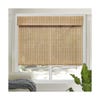
These bamboo shades up the ante with 11 different colors along with light-filtering patterns ranging from subtle stripes on a charcoal background to an almost checkerboard-like pattern in natural tones. The different weaving techniques create visual interest, and the shades roll up using a corded system. A 6-inch valance at the top hides the rolled-up shade and the installation hardware.
Best Wood: The Shade Store Wood Blinds
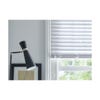
It’s options galore with these wood Shade Store blinds, which are standardized at a thickness of 2 inches but are custom in size. The basswood blinds offer more than 40 different finishes, including painted and stained options, and the laminated wood shades come in nine different finishes of sustainably sourced wood from around the globe, ranging from a light bleached oak to a dark and dramatic ebony veneer. All blinds, regardless of finish, include a straight valance and provide good light filtration when fully closed.
Best Value: IKEA Hoppvals Cellular Blinds
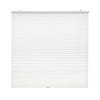
Functional and straightforward, these cellular shades from IKEA are easy on the eye and wallet. Available in a single color (a crisp white) and a few standard dimensions, they do a good job filtering light for most typical window sizes, maintaining privacy without making a space feel too dreary. They’re easy to install and have no visible cords, thanks to a small clear handle at the bottom of the blind. If you’re planning on installing on a very tall window where the top is hard to reach, a draw rod is available separately.
Best Linen: Pottery Barn Belgian Linen Cordless Shades
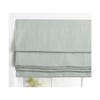
These shades come in luxurious textured Belgian linen that feels like a pair of linen pants: simultaneously casual yet put-together. They are available for windows between 20 and 50 inches and at three lengths (48 inches, 66 inches, and 84 inches), which accommodate most windows. An innovative, cord-free roller mechanism controls the shade, and a blackout liner provides additional light filtration. The four colors—white, ivory, light beige, and seafoam green—feel just as natural and effortless as the fabric.
Best Blackout: Barn and Willow Dune Blackout Roller Shades
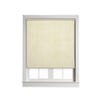
If the light in your home has proved disruptful to your sleep, this custom set of blackout roller shades just might be the perfect solution. Available in five solid and eight patterned fabrics, these can be mounted inside or outside your window frame. The smooth, medium-weight poly-cotton material is rolled up by a cord on either the left or right side. Best of all, you can pick as many samples as you’d like to compare in person before taking the plunge and purchasing.
Best Roller: West Elm Woven Cordless Roller Shades
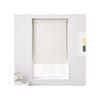
Available in inch-long increments between 20 inches and 72 inches, these woven roller shades are a major step up from those finicky bottom-of-the-barrel plastic shades. The design is straightforward and safe for use around young children (no dangling cords!), and the minimalistic hardware attachments keep it clean and simple. The woven fabric filters out light and maintains privacy while still allowing in a bit of a glow, and they’re available in three functional, neutral colors: off-white, light gray, and almost-black.
How to Buy and Install Blinds and Shades Like a Pro
- Consider pairing blinds or shades with other window treatments for a rich, layered look. “Roman shades look beautiful when used with drapes or curtains over them,” says Davina Ogilvie of New York–based direct-to-consumer custom window treatments company Wovn Home. Want to really add depth and visual interest? Go with matching or complementary fabrics, she suggests.
- If you’re struggling to figure out what kind of window blinds you need, the experts agree: Ascertain the functionality before anything else. “What do you want to achieve with each window?” ask husband-and-wife design duo Robert and Cortney Novogratz of interior design firm The Novogratz. The pair, who recently collaborated with the Shade Store on a project, recommends considering factors like privacy, light filtration, and ease of operation. Once you’ve determined your practical needs, you can move on to the fun stuff—such as how the window treatment fits into the rest of the decor plan.
- Don’t skimp on precise measuring. “We can’t stress this enough: Exact measurement is key for getting the look you want!” say the Novogratzes. And Ogilvie concurs: Off-the-shelf options, while sometimes more affordable, often don’t fit the window perfectly; you’re just not going to get the type of precision that exact measurements and custom window treatments create.
Ask Domino
Q: What’s the best way to clean blinds?
Depending on the type of blinds, a light dusting can do the trick, says Betty Brandolino, founder and creative director of interior design firm Fresh Twist Studio. For fabric shades, spot cleaning can work well, but when that doesn’t, well, hit the spot, you may need to bring in a professional. Many companies and custom upholsterers offer sonic cleaning, which can give a real refresh to blinds that have been around for a while, she notes.
Q: Can blinds be cut to size?
In short, custom is as custom does. “Custom window treatments are made to order to custom-fit your windows,” says Walker, and they can be challenging to adapt for windows of a different size. Wood blinds can sometimes be cut down to size, but cutting blinds can affect their operation and make it so that they don’t roll up or perform as intended. One exception would be blinds that are specifically noted to be adjustable in length, as is often the case with vertical blinds.
Q: Can blinds reduce noise?
The key to noise reduction? Softness. Window treatments made out of fabric, like drapery or roman shades, are particularly good at reducing noise and improving the acoustics in a room, and the heavier the fabric, the better, says Skalman.
The Last Word
Window blinds provide a critical if often overlooked function in a room by regulating light, privacy, and even noise. As a final touch that’s put on a room, they have a big visual impact thanks to their materiality. Indeed, the best blinds and shades will do everything from help you sleep better at night to block that ever-annoying glare on your computer screen—and our curated picks do both with ease.
How We Vetted These Products
Every product in a Domino guide meets these criteria:
- They blend form and function. We believe the best-designed products reflect your personal style and are a joy to use.
- They’re expert approved. In addition to our team of editors, we tap a range of designers, makers, renovators, and all-around knowledgeable people to share their intel.
- They’re endorsed by people who actually own them. We pay close attention to real reviews to know that they pass the test IRL.
